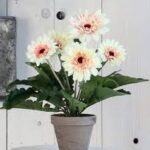**Marigolds and Protecting Avian Species: Fostering Harmony Between Flowers and Feathered Friends**

In the delicate ecosystem of our planet, marigold flowers serve as guardians of biodiversity, offering vital support and sustenance to avian species that grace our skies and enrich our lives with their melodious songs and graceful flights. With their vibrant blooms, nutritious seeds, and nectar-rich flowers, marigolds play a crucial role in safeguarding avian habitats and promoting the conservation of bird populations worldwide. Let’s embark on a journey to explore the symbiotic relationship between marigolds and avian species, celebrating the profound bond between flowers and feathered friends and the importance of protecting our winged companions for generations to come.
**1. Avian Biodiversity: Guardians of the Sky**
Avian biodiversity encompasses the rich tapestry of bird species that inhabit our planet, from majestic raptors and migratory songbirds to colorful parrots and elusive owls. Birds play diverse ecological roles, including pollination, seed dispersal, pest control, and nutrient cycling, making them integral components of healthy ecosystems and indicators of environmental health. However, avian populations face numerous threats, including habitat loss, climate change, pollution, and predation, which jeopardize their survival and disrupt ecological balance.
**2. Marigolds: Nurturing Nectar for Pollinators**
Marigolds are revered for their nectar-rich flowers that attract a myriad of pollinators, including bees, butterflies, and hummingbirds, with their sweet fragrance and vibrant colors. By providing essential nectar and pollen resources, marigolds support avian species that rely on flower nectar as a primary food source, including hummingbirds, sunbirds, and honeyeaters. As vital pollinators, these birds facilitate the reproduction of flowering plants, ensuring the continuation of plant species and the maintenance of ecosystem resilience.
**3. Seed Dispersion: Marigolds as Providers of Sustenance**
Marigolds produce nutritious seeds that serve as valuable food sources for a variety of bird species, including sparrows, finches, and doves, during the lean winter months when natural food supplies are scarce. By scattering marigold seeds in garden beds, meadows, and natural areas, gardeners and conservationists can create foraging opportunities for birds and contribute to the enhancement of avian habitat diversity. Marigold seeds offer an abundant and accessible food source that supports avian populations and promotes ecosystem health and resilience.
**4. Habitat Enhancement: Marigolds as Green Oasis**
Marigolds contribute to habitat enhancement efforts aimed at creating green oases and wildlife refuges in urban, suburban, and rural landscapes. By planting marigolds in gardens, parks, and green spaces, communities can provide essential habitat elements such as shelter, nesting sites, and foraging areas for birds, fostering biodiversity and ecological connectivity. Marigold flowers attract insect prey, such as aphids and caterpillars, which in turn attract insectivorous birds that help control pest populations and maintain ecological balance.
**5. Conservation Awareness: Engaging Communities in Avian Protection**
Marigolds inspire conservation awareness and community engagement initiatives that raise awareness about the importance of protecting avian species and their habitats. Through educational programs, birdwatching events, and citizen science projects, communities can learn about local bird populations, their ecological significance, and the threats they face. By involving residents in bird-friendly gardening practices, habitat restoration projects, and advocacy efforts, communities can contribute to the conservation of avian biodiversity and promote sustainable land management practices that benefit birds and people alike.
**6. Policy and Advocacy: Supporting Avian Conservation Efforts**
In conclusion, marigolds and the protection of avian species are intertwined in a delicate dance of mutual dependence and stewardship. By harnessing the ecological benefits of marigolds and advocating for avian conservation policies and initiatives, we can create a brighter future for birds and humans alike. Through collaborative action, informed decision-making, and a shared commitment to protecting our feathered friends, we can ensure that marigolds continue to bloom and birds continue to soar, enriching our lives with their beauty, vitality, and song for generations to come.

